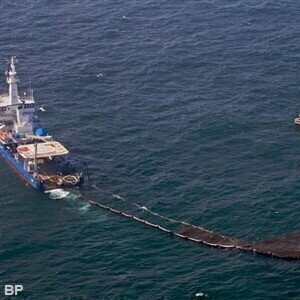Fuel for Thought
FEI and University of Oklahoma Begin Collaboration Research Agreement for Understanding and Developing Unconventional Oil and Gas Reservoirs
Jun 12 2013
FEI (USA) and the University of Oklahoma (OU) have commenced a research collaboration agreement to establish an oil and gas center of excellence, the “FEI-OU Pore Scale Characterisation Laboratory,” at the OU Mewborne School of Petroleum and Geological Engineering (MPGE). The research will focus on the development of routine quantitative methods to classify shales in the economic assessment of tight oil and gas plays. Through the collaboration FEI seeks to further develop its position as the leading supplier of high-resolution imaging solutions to the oil and gas industry by better defining and expanding its role in the characterisation of unconventional reservoirs.
“There has been tremendous growth in the development of oil and gas found in unconventional shale reservoirs,” states Carl Sondergeld, professor at MPGE. “Unlike conventional reservoirs, the pores that hold the oil and gas in shales are very small and poorly connected--hence the term ‘tight’. Petroleum engineers would say they have low porosity and low permeability, making it difficult to extract any hydrocarbons that might be present. FEI’s tools allow us to see the pores and organics directly, view the material they contain, and actually reconstruct three-dimensional (3D) models of the pore network. The challenge now is to relate these nanometer-scale features to the large-scale geological and petrophysical characteristics that determine the economic potential of a particular reservoir.”
According to Rudy Kellner, vice president of FEI's Industry Group, “FEI has a strong track record of transforming laboratory methods into industrial solutions, for example, our systems have become critical in the semiconductor manufacturing industry for process control and failure analysis. We would like to replicate that success as the leading provider of ‘information from images’ in the upstream oil and gas industry. Collaborating in the development of external resources, like this FEI-OU Pore Scale Characterisation Laboratory, allows us to acquire a deeper understanding of the industry’s challenges and our role in providing solutions.”
The collaboration agreement includes FEI’s Helios NanoLab 650 DualBeam and QEMSCAN automated mineralogy tool. The DualBeam uses a scanning electron microscope (SEM), to provide high-resolution imaging, and a focused ion beam (FIB), to remove thin slices of the sample, allowing the reconstruction of a high-resolution 3D model of the pore network. The QEMSCAN combines SEM and X-ray spectrometry to automatically analyse mineral content, lithology (rock type), and various other petrographic characteristics.
Sondergeld explains, “The real challenge in this application is that we are measuring micrometers of the sample and trying to extrapolate the results to kilometers of resources. A key objective in our collaboration will be to link nano-scale observations to large-scale petrophysical parameters relevant to economic decision making in the exploration and development of shale gas reservoirs. This means imaging and analyzing the micro- and nano-scale structures with QEMSCAN and DualBeam technology and reconciling the results with conventional macroscopic measurement technologies, such as mercury injection, NMR, CT scanning, core fracturing studies and others, to build better reservoir models.”
Currently, predicting the potential value of tight gas discoveries is difficult. For example, hydraulic fracturing is largely a trial and error process. Better understanding of the parameters that govern fracturing may allow customisation of materials and procedures based on the reservoir rock’s microstructure and matrix composition to increase revenues and margins. As another example, initial production rates and decline rates are difficult to predict. Understanding the linkage between microscopic structure and petrophysical characteristics may support better choices of production sites and stage design.
“Looking even further ahead, we may be able to infer the maturity of organic matter from the morphology of the organic particles and the surrounding texture, or to determine if anisotropy can be used to map organic richness,” said Sondergeld. “Anything we can do to reduce uncertainty in exploitation and reservoir evaluation will have great value to the industry,” he adds.
Digital Edition
PIN 25.1 Feb/March
March 2024
In This Edition Safety - The technology behind the ION Science Tiger XT - Safety with ammonia and LOHCs as hydrogen carriers Analytical Instrumentation - Discussion on new tribology te...
View all digital editions
Events
Apr 30 2024 Birmingham, UK
May 03 2024 Seoul, South Korea
May 05 2024 Seville, Spain
May 06 2024 Riyadh, Saudi Arabia
May 06 2024 Houston, Tx, USA


















